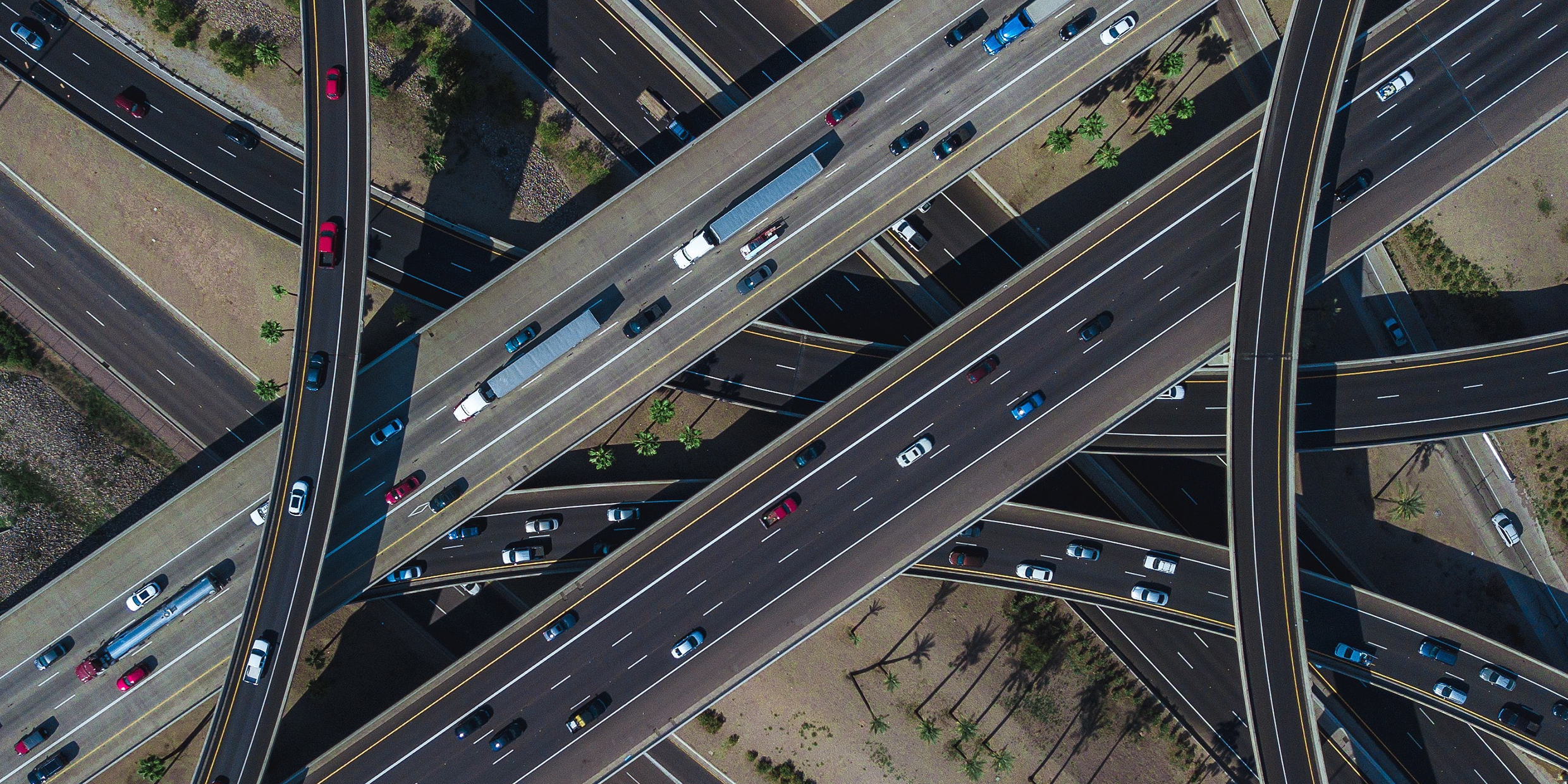Originally published 17 April 1995
This is the sad saga of an American roadway.
I am speaking of the 10-mile stretch of Route 24 between Route 128 and Brockton, which I have been driving for 30 years.
This six-lane (originally four), limited-access highway was constructed in the 1950s through sparsely-developed suburbs. Unbroken woodlands lapped the verges, white in winter, dappled green in spring and summer, gloriously technicolored in autumn.
If one had to commute, this was the way to do it: In the repose of nature’s leafy embrace.
Within the last decade, the woods have been hacked away, rocky ledges blasted flat, and the highway walled on both sides with gargantuan, flat-roofed, block and structural steel warehouses — the building supply depot, the furniture depot, the food depot, the shoe depot, the office supply depot, etc.
In architecture, form follows function. The function of this double line of discount warehouses is the reduction of American taste to the lowest common denominator; the form is what environmental critic James Howard Kunstler calls “highway crudscape.”
The new palaces of crud along Route 24 do not make the slightest nod toward esthetics. Gone are the faux-mansard roofs that used to give roadside architecture a shabby pretense of class. Gone are the glass windows that acknowledge a human presence. Instead, we get cheap mega-crackerboxes that previously would have been deemed suitable only for aircraft repair or indoor cattle pens.
Where are the stewards of public space who should be protecting us from this desecration of our visual landscape? Where are the elected officials with the courage to care for the common good?
Few and far between, it seems. Locally, we have giveaway planners. And down in Washington a new crowd is intent on dismantling the last frail instruments of environmental protection.
All in the name of Americanism, of course. Guided by that most sacred of American principles: Money makes the world go round.
According to the new anti-environmentalists, making rich people richer is the sublime intent of our Constitution. The right to despoil the landscape for profit is right up there at the top of our sacred compact, along with the right to own assault weapons to protect one’s own piece of despoiled land.
Individualism is paramount. The commonweal is suspect. Ecology is the enemy of freedom.
James Howard Kunstler, who writes for the New York Times Sunday Magazine, has addressed these issues in a fine little book called The Geography of Nowhere.
He writes: “Indulging in a fetish of commercialized individualism, we did away with the public realm, and with nothing left but private life in our private homes and private cars, we wonder what happened to the spirit of community. We created a landscape of scary places and became a nation of scary people.”
There is a direct connection between despoliation of suburban spaces and the spiraling costs of government, says Kunstler. Likewise, there is a connection between disregard for the public realm and the breakdown in public safety.
For a generation, ecologists have been documenting the intricacy of relationships that bind the natural environment. In all of nature, there is no such thing as unencumbered individualism. No creature goes its own way without consequence to the web.
The human delusion is to believe that we are separate from the web, that we can muck about ripping out strands of the web without consequence. Without economic consequence. Without psychological consequence. Without social consequence.
But the truth is, the rape of public space along Route 24 goes hand in hand with the moral malaise in the surrounding communities. When nothing is held in trust, nothing is trusted.
“Eighty percent of everything ever built in America has been built in the last 50 years,” says Kunstler, “and most of it is depressing, brutal, ugly, unhealthy, and spiritually degrading.”
But, my, oh my, it made some individuals a bunch of money. And burdened the taxpayer with skyrocketing costs for public health and safety.
Economics and ecology are not in opposition. They are equally important to our future well-being.
But we are fixated only on the first.
The American poet William Jay Smith wrote a poem called The Flight of the One-eyed Bat. There is a line in the poem that reminds me of the esthetic desolation along Route 24: “…the town has clutched at the country, And the country swallowed the town.”
We surrender to commerce the last of the green world; the cities, deprived of their commercial heart, decay.
The one-eyed bat of Smith’s poem flies straight at the setting sun. Night blinks its thousand eyes; the bat’s eye never blinks. The bat flies with a fierce fixation as the world closes down around it, flies till the head-on “dark deed’s done.”
We are the one-eyed bat: the eye of economics enlarging, the eye of ecology firmly closed. Flying dead-on through a geography of nowhere toward the setting sun.



